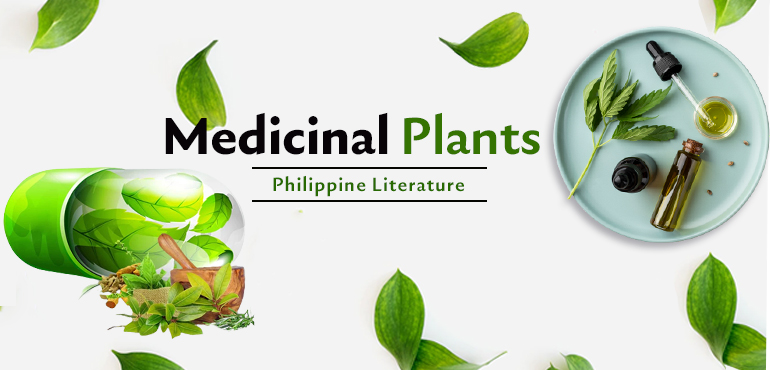Since the dawn of historic times ancient medical knowledge has been introduced to us , Source of Natural Products saved and transmitted in every niche and corner of this civilized world. Nearly all the ancient invention in medical discovery, came from the herbal and natural field.
Many important drugs are natural and herbal products or orignated from natural products. 48.6% of all cancer medicine registered from the 1940s until today are either Source of Natural Products and more than one third (39.1%) of all Food and Drug Administration (FDA) approved medicine are of organic origin. Natural products are essential sources in the drug discovery process. The importance of natural products in new drugs discovery demonstrates the presence of more than 200,000 natural metabolites presenting several bioactive properties.
Natural products are one of the notable sources of medicinal plants [3]. In most countries medicinal plants have been used for treatment since ancient times up to this day [4]. According to a hundred of years of beliefs and observations, the development of the modern drugs is based on the practices of plant-based traditional medicine, [5].Plants have evolved a comprehensive defence mechanism that includes a diverse set of compounds. Source of Natural Products Antimicrobial compounds found in plant tissues have long been recognised as valuable natural chemicals that can also operate as botanical insecticides or bactericidal and fungicidal agents against infections that cause human disease
Medicinal plants as a natural product source
Antioxidants are abundant in plants, which are necessary for their survival in the environment. Antioxidants are frequently linked to a reduction in health risks that contribute to diseases like diabetes. Plant-based traditional medicines are still widely used because they are typically affordable to manufacture, effective, and have little side effects when used to treat common conditions. As a result, plant extracts have shown to be a rich source of potential medication candidates [19].
There are a variety of endophytes that can be found inside a living plant. Endophytes are an endosymbiotic category of microorganisms that invade plants and microbes without producing disease. They are often bacteria or fungi. Endophytes are common and have been detected in all plant species investigated to date; nevertheless, the majority of endophyte or plant interactions are unknown.
Some endophytes can help plants withstand abiotic conditions like drought, while Source of Natural Products others can help with host development, nutrient acquisition, and insect, plant disease, and herbivore resistance.These endophytes play a vital part in the management of plant communities, and they may be of interest because they produce secondary metabolites. In local communities and places, a variety of plant species play an essential part in healing traditions.
Allium sativum
Allium sativum is a type of onion (Garlic or Bawang)
For almost 5,000 years, Allium sativum (Garlic/Bawang) has been used as a spice, food, and medicine, and is one of the earliest documented herbs used for medicinal Controlling cholesterol levels and blood pressure regulation are examples of health maintenance and illness therapy [21].
Garlic is a low-growing herb that grows 30 to 60 centimetres tall. The true stem has been greatly reduced. Source of Natural Products Bulbs are generally ovoid in shape, measuring 2 to 4 cm in diameter and made up of numerous densely packed, angular, and truncated tubers. The leaves are flat and straight. The umbels are globose and have numerous flowers. Sepals are oblong and greenish white with a purple hue. The perianth does not exert any force on the stamens. Garlic is a common condiment that originated in Central Asia and northeastern Iran, and has been consumed and used by humans for thousands of years [22].

Blumea balsamifera
Blumea balsamifera is a kind of balsamifera (Nagal camphor or Sambong)
There are other therapeutic options available, including a herbal treatment in the Philippines that uses the medicinal herb Blumea balsamifera [10].
A common Philippine herbal blooming plant used to cure wounds and cuts, as well as rheumatism, anti-diarrhea, anti-spams, colds, and coughs. Infected wounds, respiratory infections, and stomach problems are all treated with it. Because of its diuretic properties, Source of Natural Products sambang is highly popular among persons who have kidney difficulties. It can be consumed as an early afternoon tea to keep the urinary system healthy. It also aids in the removal of uric acid.
Patients with renal difficulties should take sambong, according to the Philippine National Kidney and Transplant Institute. It may help to delay dialysis and other renal disorders, according to studies. Sambong has antibacterial and antifungal effects as well.
Blumea balsamifera, often known as sambong, is a popular medicinal plant in the Philippines. It can be found at low and medium altitudes in open fields, grasslands, and waste areas. China, Hainan, Bhutan, Cambodia, Laos, Indonesia, Malaysia, Thailand, and Vietnam [23] are also affected.

Cassia alata
It is a species of Cassia (Ringworm Bush or Akapulko)
alata L. (Akapulko), often known as “Ringworm Bush” or “Senna,” is a tall medicinal shrub (or small tree) native to the tropics and subtropics. Medicinal properties can be found in almost every section of the plant. Skin illnesses like as dermatitis and pruritic (itching) are treated with decoctions of the leaves, flowers, and bark, while a decoction of the wood is used to treat constipation. Alkaloids, lectins, glycosides, isoflavones, phytoestrogens, hydroxyanthraquinones, chrysophanic acid, kampferin, and sannoxide A and B are only a few of the substances found in the plant.
Leaf extracts Source of Natural Products from this species have been demonstrated to have antibacterial, anti-inflammatory, analgesic, and anti-hyperglycemic qualities, as well as anti-bacterial, anti-microbial, and anti-fungal characteristics [24]. Linn. is found in populated regions at low and medium altitudes across the Philippines [25].

Clinopodium douglasi
It is a species of Clinopodium (Mint or Yerba Buena)
douglasii belongs to the Lamiaceae family and is a fragrant herb. It’s a branching, scented herb that’s prostrate, glabrous, and slightly hairy. It’s grown all over the Philippines and propagated using terminal cuttings. Pulgenone, pitoeitone, limonene, menthol, menthene, and menthenone make up the majority of the 0.8 percent volatile oil [26].
Clinopodium douglasii grows as a weed in settled regions from northern Luzon (Cagayan) to Mindanao, on all or most islands and provinces, and in open, waste locations, fallowrice paddies, and other places. Introduced from Mexico, it has now established itself on Taiwan’s Marianne and Caroline Islands, Java, and Amboina [27].

Microphylla Ehretia
Microphylla Ehretia (Scorpion Bush or Tsaang-Gubat)
The Republic of the Philippines Department of Health has approved Ehretia microphylla (Tsaang Gubat) as one of ten medicinal plants to treat a variety of disorders C[8]. The benefits of several components (phenolic acids, flavonoids, benzoquinones, cyanogenetic glycosides,and fatty acids) are related to the actions of the leaves as antispasmodic, mouthwash, and body cleanser [28].
Ehretia microphylla can be found in thickets and secondary woods at low to medium altitudes across the Philippines, from the Batan Islands and northern Luzon to Palawan and Mindanao. It’s also found in India, China’s south, Taiwan, and Malaysia [29].

Momordica charantia
Momordica charantia (Momordica charantia) is a plant (Bitter Melon or Ampalaya) In several regions of the world, unripe fruit, seeds, and aerial portions of Momordica charantia Linn. (Cucurbitaceae) have been used to cure diabetes. In normal and diabetic animals, as well as people, oral administration of the fruit juice or seed powder lowers fasting blood glucose and improves glucose tolerance [30]. Momordica charantia is an Asian-derived traditional plant that has been offered as a treatment for diabetes and diabetes-related problems.
Cucurbitane-type triterpenoids, steroidal saponins dubbed “charantins,” insulinlike peptides, and alkaloids, all of which are thought to affect carbohydrate metabolism, are found in bitter melon fruit[31]. Momordicine, charantin, saponins, glycosides, phenolic components, various alkaloids, and 5-hydroxytryptamine are phytochemicals found in Momordica charantia, and these, along with lycopene and lutein, are responsible for antibacterial and anticancer activity [32].
Peperomia pellucida
Peperomia pellucida is a species of peperomia (Silver Bush or Ulasimang Bato)
An annular herb, Peperomia pellucida L Source of Natural Products The roots are fibrous; the stems are translucent pale green, erect or ascending, usually 15-45 cm long, internodes usually 3-8 cm long, glabrous; and the leaves are medium green on the upper surface, whitish green on the lower surface, thinly fleshy, drying papery, broadly ovate, 1.5-4 (-5) cm long, 1-3.3 cm wide, palmately 3-nerved or 5-nerved, glabrous, apex
There were one to several spikes, terminal and axillary or leaf-opposed, filiform, ca. 3-6 cm long, the rachis ca. 0.4-0.6 mm in diameter, glabrous, flowers well-spaced, peduncles ca. 0.6-1 cm long, glabrous; ovary ovoid; stigmas terminal and also fruits were subglobose, ca. 0.5 mm long, longitudinally ridged, apex Peperomia pellucida is a pantropical plant native to the United States.

Guajava Psidium
Guajava Psidium (Guava or Bayabas)
Psidium guajava (Guava/bayabas) is a phytotherapic plant that is considered to have active components that can help treat and manage a variety of ailments. Malaria, gastroenteritis, vomiting, diarrhoea, dysentery, wounds, ulcers, toothache, coughs, sore throat, or swollen gums have all been treated with various parts of the plant in traditional medicine [38].
Bayabas is a hairy plant that grows to a height of 8 metres. The young branches have four angles. The leaves are opposite, oblong to elliptic, and 5 to 1 cm long, with a sharp apex and a rounded base.
The peduncles have one to three flowers. Flowers are white, 3 to 3.5 cm in diameter, with in-curved petals, and appear singly or in groups of two to three on the leaf axils. The appealing component of the flower is made up of many stamens. Inferior ovaries produce round or obovoid green fruits that are 4 to 9 cm long and contain a delicious, aromatic, seedy pulp.

Negundo
Vitex is a genus of big shrubs or small trees that belongs to the Verbenaceae family. Vitex negundo Linn, also known as Lakki gida in Kannada, is most usually found along roadsides and along the banks of streams. It’s a big, silvery-tomentose shrub or small tree with bluish purple flowers in panicles at the ends of slender cymose branches. Leaflets are 3-5 in number, with the middle one being significantly longer petiolulate, whole, lanceolate, acuminate, and membranous, measuring 12x2cm. [41] The bark is thin and greyish.
Antimalarial activity [42], anthelmintic activity [43], wound healing activity [44], antipyretic activity [45], antioxidant activity [46], antifungal activity [47], and antibacterial activity [48] have all been discovered in V. negundo.
Vitex negundo is native to Indo-Malaysia and is grown in America, Asia, Europe, and the West Indies. Within India, it can be found across the majority of the country, rising to 1,500 metres in the outer Himalayas [49].




